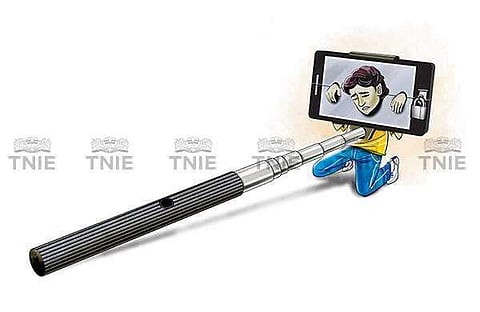

During the 1970s, photographic self-portraiture flourished when affordable instant cameras birthed a new medium of self-expression, capturing uncharacteristically personal insight into otherwise conservative individuals and allowing amateurs to learn photography with immediate results. This practice transitioned naturally across to digital cameras as they supplanted film cameras around the turn of the millennium. On September 13, 2002, the first known use of the word selfie in any paper or electronic medium appeared in an Australian internet forum. The concept of uploading group self-taken photographs to the internet dates to a webpage created by Australians in September 2001. In 2013, the word selfie was added to the Oxford English Dictionary.
That is the brief account of the birth and growth of selfie. Now we come to the ancestry of the selfie. It was noted at the start that selfie surfaced because they could not spell narcissist which term, in turn, is derived from a narcissism which stands for an inordinate fascination with oneself, excessive self-love and vanity.
The term has its root in Narcissus of ancient Greek mythology where a youth fell in love with his own image reflected in a pool of water and wasted away from unsatisfied desire whereupon he was transformed into a flower (narcotics-related). A recent report in the media noted that like narcotics, selfies can maim and kill five times more people than shark attacks.
According to the report, the death toll has slowly risen each year, as smartphones become more sophisticated and selfie sticks increase the range at which people can snap themselves. This, in turn, has led to people taking bigger risks than ever to get that perfect shot. And the data confirm this.
Between October 2011 and November 2017, at least 259 people were killed taking selfies around the globe. That’s compared to just 50 people who have died from shark attacks. India – which has more than 1.3 billion people and 800 million cell phones – holds the record for the number of people dying in the act of photographing themselves.
More than 159 people have perished on the sub-continent while taking a selfie. The situation has become such a threat, that the city of Mumbai has had to set up 16 ‘no selfie’ zones.
In Russia, after several deaths of teenagers falling from bridges and high-rise buildings, the police had to issue a guide to ‘selfies without danger’ back in 2015. In the United States, a majority of selfie deaths occurred as men and women fatally shot themselves while trying to get a good pose while holding a firearm.
Let us not quarrel about whether men or women are more addicted to selfies, but recognise their clear and present danger.
